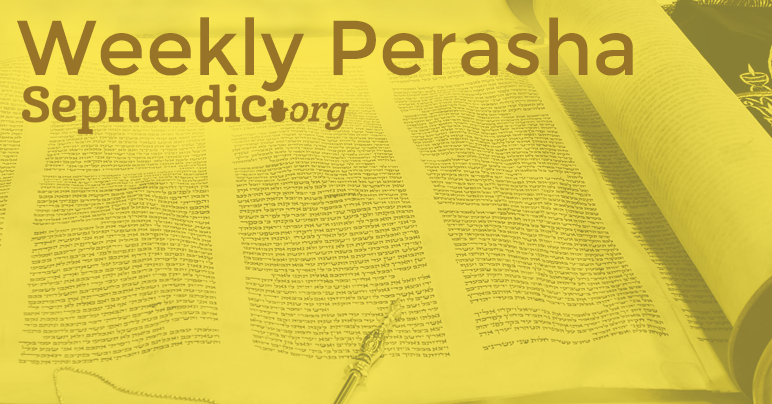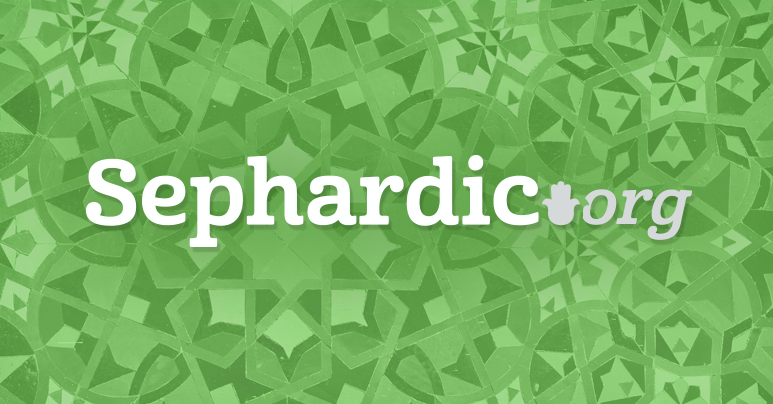
NOAH 1.1 - BUILDING HOLY AND UNHOLY EDIFICES
One of the methods for revealing the light of the Creator into the physical and spiritual worlds is to properly make use of the Divine Names which will act as vessels to receive this light. 1 Misuse of these Names can be considered a form of idolatry. The onset of the era of Enosh sees mankind involved in the unholy manipulation of the Divine Names to further their form of idol worship. 2 As it is written “Then men began to profane the Name of the Lord.” 3 This form of desecration continues until the time of the flood as it is written “the mighty of old, the men of the Name.” 4 Noah in contrast was given instructions to build a holy edifice - the Tevah - implementing certain Divine Names. These would include the names of ADNY and YHVH 5 which are reflected in the dimensional requirements for the construction of the ark. The Malbim explains: The top floor occupied by humans would be built by multiplying the numerical value of the initial letters of each name (1 Alef x 10 Yud) equaling 10 Amot. The second and third floors by multiplying the 2nd letters (4 Dalet x 5 Heh) equaling 20 Amot. The length was established by multiplying the third respective letters (50 Nun x 6 Vav) equaling 300 Amot. The width infused with the multiplication of the final letters (10 Yud x 5 Heh) equaling 50 Amot. The unity of these Holy Names he notes is a reflection of the Divine Will to establish a canopy of peace - a Sukkat Shalom within the world. 6
EXTRACTING THE GOOD AND DESTROYING HAMAS
“The end of all flesh has become before me. The earth is filled with Hamas - spelled Het Mem Samakh - thievery.” 7 It is admittedly puzzling why the Torah selects this transgression as the cause of the flood. Surely more heinous crimes were being committed. R. Moshe Cordovero explains that the main nemesis in establishing a holy edifice at the time were the serpent Nahash -spelled Nun Het Shin - and the accompanying destructive angel whose name is spelled Samakh Mem Alef Lamed but is not to be pronounced. 8 These forces were built through a combination of holy and unholy aspects as depicted in their respective names. With the sin of Adam and Havah the lower worlds and their inhabitants descended spiritually into negative territory causing an admixture of good and evil. 9 Even predominantly evil forces such as these were now structured with sparks of light fallen from a previously holy domain. 10 Good is reflective of the oneness of the light of the Creator while the intent of evil is its’ concealment. These two aspects are hidden within the hebrew letters or pockets of energy that form the names of these two forces. Hence, Noah now was tasked to extract from these forces their holy aspects as indicated by their holy letters to help build the ark and to provide life for those aboard. At the same time their unholy aspects as indicated in the remaining letters will need to be subdued to give him a possibility of success. The external letters Nun and Shin of Nahash - or serpent - along with the letters Alef Lamed of its’ spiritual partner 11 the destructive angel are to be considered holy. The Nun and Shin have numerical values corresponding to the length (300) and width (50) of the ark, while the Alef Lamed were representing its height (30) and a single (1) Amah at the top. 12 “This is how you shall construct it; the ark’s length shall be 300 cubits, it’s width 50 cubits, and its height 30 cubits. Make a skylight for the ark, make it slanted so that it is one Amah on top.” 13 The letters Samakh Mem and the internal Het of NaHaSh belong to the side of unholiness. This is the secret of the Talmudic statement “A snake’s venom stands within it’s fangs.” 14 Namely the venom of the serpent resides within its internal letter. These unholy letters Het and the Mem Samakh combine to form the word HaMaS referenced in the Torah as their crime which must be obliterated. 15
THE UNHOLY TOWER OF BAVEL AND DISPERSION OF THE 70 NATIONS
The end of the Parasha sees Nimrod and the people of Bavel reversing course and building an unholy edifice by making unauthorized use of Holy Names. 16 “They said - come let us build ourselves a city and a tower whose top shall reach the sky. Let us make ourselves a Name, so that we will not be scattered all over the face of the earth.” 17 R. HaAri teaches that they knew the names of God and employed them for unholy use. When the Torah describes them as having one language and Devarim Ahadim -matters concerning universal unity - it connotes their mastery to permeate the holy Hebrew letters related to the Divine with unholy intent. 18 Their power was understood above in the celestial worlds when it was admitted “that nothing they attempt to do will be out of their reach” 19 They were armed with an unbridled power via their knowledge of the Divine Name and Holy letters. They set their sights to build an unholy city and tower. To accomplish this they descend into a valley associated with impurity to build an unholy unstoppable edifice. 20 “They found a valley in the land of Shin’ar.” 21 Later on in history it would be in this same location that another unholy edifice would be built - mimicking this initial attempt. In order to avert this profanity, Hashem is forced to mix their language circumventing their ability to access these Holy Names and dispersing them into 70 nations. 22
SHELOMO BUILDS A HOLY EDIFICE - THE TEMPLE
A thousand years later, the Bet Hamikdash, a holy edifice is built by Shelomo HaMelekh. It represented for that era the ultimate in achievement for mankind. A physical expression of holiness, a place the Divine Light was revealed embracing all that was enjoined by the Torah. In Sefer Devarim this place is synonymous with that edifice where his Holy Name dwells. 23 We might consider that the events recorded in Noah represent the prototypical building of all holy and unholy edifices. It would then be important to note that immediately prior to its dedication, Shelomo found it necessary to bring peace offerings totaling 22000 cattle. 24 No doubt to rectify any prior misuse of the twenty two holy Hebrew letters - such as the transgression of Migdal Bavel - the worlds prototypical unholy edifice. In addition 120000 flock are also offered which presumably parallel the 120 years to build the Tevah -the world’s prototypical holy edifice. 25
ANOTHER ATTEMPT TO BUILD AN UNHOLY EDIFICE
Five hundred years later Nimrod is transmigrated into the Babylonian King Nebukhadnessar. 26 The latter would once again attempt to establish a permanent unholy edifice in that same Babylonian valley as did the generation of the Tower. As it says “King Nebukhadnessar made a statue of gold...he stood it in the Valley of Dura, in the province of Babylon.” 27 R. HaAri teaches that this ruler made this idol statue to fulfill the same function as did the idol tower of Nimrod. 28 He infused the idol via the power of the Divine Name imbedded into the - Siss headband a vestment of the Kohen Gadol which had been taken and placed into the mouth of the statue. The idol-edifice spoke and said - I am God - your God. Daniel climbed up the statue with a pretense to kiss it. He then proceeded to remove the Siss- from its mouth, withdrawing its divine power and toppling it to the ground. 29 Yirmiyahu writes concerning this idol called Bel. “I will punish Bel in Bavel and I will remove from his mouth what he swallowed.” 30 Curiously the Talmud tells us that there were two other events that occurred in that valley on that same day. The first was the refusal of Hananya, Mishael, and Azarya to bow to the idol at the threat of being thrown into a fiery furnace. 31 Their refusal to submit to Nebukhadnessar which was to mimic the heroic act of Avraham against Nimrod was according to R. HaAri essential for the survival of Israel. A misstep into this form of idolatry would have transferred all of the power of Israel into this unholy edifice and its maker the King of Bavel. 32 The second was the resurrection of the dry bones of the dead performed by Yehezqel HaNavi in that same Babylonian Valley of Dura. According to the opinion of Rav cited in the Talmud - these bones were the remains of the descendants of Ephraim who attempted to leave Egypt before the appointed time. 33 The Zohar equates their sin somewhat to the building of the unholy tower in that they were also guilty of inappropriately making use of Divine Names. 34 They were buried in the same Valley of Dura which became satiated with these bones as it is written -“He took me out by the spirit of YHVH and set me down in the Valley and it was full of bones.” 35 This place which had been imbedded with negative forces would be subdued by the pure holy life force given to the bones to resurrect.
OUR USE OF DIVINE NAMES TO HELP BUILD THE HOLY EDIFICE It is not exclusively the biblical characters who build holy or unholy edifices. According to the teachings of R. HaAri - When one performs a Misva or completes a Tefilah with the appropriate meditations he is actively building a holy spiritual edifice. 36 In order to accomplish this one must make use of the Divine Names formulated in accordance to the rules of Kol Sameh where the divine light descends and is clothed in the five coverings of Kelim, Levushim, Selamim, Mohin and Orot hinted in these two words in the form of its’ acrostic. 37 The Siddour HaRashash openly displays how the Divine Names are arranged to capture and cloth the light descending into the target vessel or edifice. This is our contribution and participation in building the celestial temple in the Yerushalayim above. Our service will culminate in the parallel building or revelation of its physical counterpart - the Bet HaMiqdash in Yerushalayim below. 38 For without our proper use of Divine Names it is impossible to build the spiritual and physical temples. At the same time we must be careful to distance ourselves from evil which includes building unholy edifices. Hence the requirement to remain pure during our service which includes the use of the Divine Names as taught by R. HaAri and laid out by the Rashash in his Siddour.
MASHIAH - BUILDING THE EDIFICE AND RESCUING THE 70 NATIONS
It is written “David made a name for himself.” 39 This appears to be a reference to David as King Mashiah who builds the final holy edifice and rescues mankind completely from the negative effects of evil including the transgressions of the Tower of Bavel. He will gather the dispersed of the seventy nations to serve the Creator. At that time the world will come towards an elevated understanding of Hashem - including how his Holy Name is intertwined with the revelation of his Presence. As the Navi Yirmiyahu foretells of this era when - “They will no longer teach - each man his fellow - saying - Know YHVH! For all of them will know me.” 40
Shabbat Shalom
Victor Bibi








